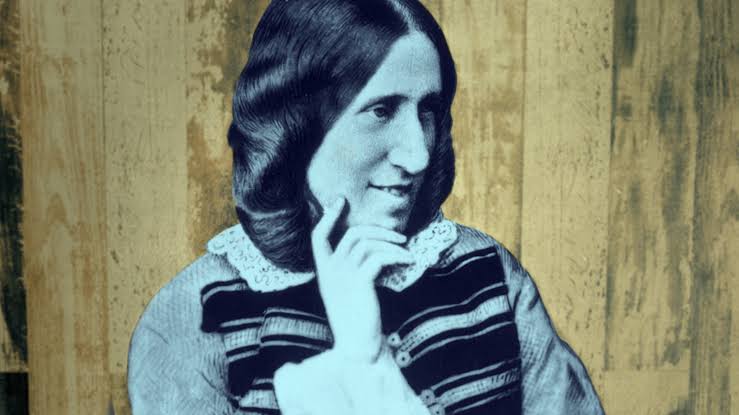Read Time: 4 minutesThe writer and many of her compatriots he made life choices uncannily similar to those of the current and the previous generation’s, writes Helen Kingstone
We hear a lot right now about tensions between different generations: baby-boomers versus millennials, for example. But those born 200 years ago combined characteristics of both these modern generations.
The most famous person born in 1819 is probably Queen Victoria – but she had many important contemporaries. One of these was George Eliot, a pioneering woman writer who would have turned 200 this week, and whose life and work helps us understand her world and ours.
The 1819 cohort was part of a post-war baby boom. The previous decades had been dominated by a world war, which broke out in the wake of the French Revolution and raged across Europe and parts of Africa, Asia and the Americas for more than 20 years.
In some ways, they were much less fortunate than 20th-century baby boomers. Their childhoods did not see the foundation of a post-war welfare state. On the contrary, the repressive government continued to forbid protests. In August 1819, working people met at St Peter’s Fields near Manchester for a political rally, but the local cavalry charged in to clear the crowd. At least ten people were killed and hundreds were injured.
This became known as the Peterloo Massacre, emphasising that violence and suffering had not ended with Waterloo. 1819 was not an auspicious time to be born.
The Peterloo massacre in Manchester on August 16, 1819, in which at least ten people were killed.Richard Carlile (1790 – 1843)
Thoroughly modern
The Victorian era saw a huge population boom and mass migration within Britain. George Eliot was born Mary Ann Evans in the rural Midlands, at a point when most people lived outside of towns. But, by the 1850s, for the first time more than half of people in Britain were urban. And Eliot became one of them – like many contemporaries she left for the big city, and never went back.
The life she made for herself in London, however, was very unusual. She seized the chance of a career when very few Victorian women had such a thing, and took on a new identity as a translator and journalist. Then she and a married man fell in love.
They set up home together, and while she saw her life-partnership with GH Lewes as a marriage, she would always be seen by polite society as “living in sin”.
When she started to write novels in her late 30s, she wrote under a male disguise. She was found out before long, but the name George Eliot stuck. It enabled her to write with the kind of masculine authority often denied to other women writers of her generation.
Class of 1819
Few millennials have a “job for life” – and many are by necessity juggling portfolio careers. We might think of this as a new phenomenon, but both elements would have been familiar to the generation born 200 years ago. At that time, few people had much choice over what they did for a living. They followed their parents’ or local trades, working on farms, as servants or in the new steam-powered mills and factories.
In all these sectors, security was minimal and many migrated to follow the work. On the other hand, if you were educated and could afford it, there was freedom to explore.
It was quite a cohort. Among the notable individuals turning 200 this year are several others who had enormous influence on the world around them. John Ruskin made his name as an art critic, but was also an impassioned social commentator who wrote on everything from geology to economics. Ernest Jones grew up around royal courts and trained as a lawyer, but became a poet. He joined the radical Chartist movement that campaigned for the working-class vote, was imprisoned for it, and ended up a politician.
Meanwhile, Charles Kingsley’s novel The Water Babies (1863) successfully helped stop young boys being forced to work as chimney sweeps.
Joseph Bazalgette was a civil engineer who rescued London from the Great Stink by building a majestic sewer system, but he also enjoyed art and designed the Crossness Pumping Station to look like a medieval cathedral.
These people’s careers often spanned arts and sciences, invention and creativity, theory and activism, in ways few do today.
Today’s millennials have seen the arrival and all-encompassing spread of the internet. The 1819 generation also navigated new communication networks: their teenage years were the years of the first railways. They made the most of this new technology, and by the end of their lives train travel had become normal – it’s what enabled Queen Victoria to make regular trips to her highland home at Balmoral.
But industrialisation and railway building also caused huge upheaval. In her masterpiece novel Middlemarch (1871-72) – set in the Midlands during her teenage years – Eliot depicts this upheaval. She initially presents the anti-railway protesters as narrow-minded yokels, but eventually acknowledges that these men “are in possession of an undeniable truth” – the fact that they wouldn’t see any of the “social benefit” from the railways. Eliot knew that technological “progress” would damage the rural communities it left behind.
We often think of generational identities and divides as new, but the generation born 200 years ago also often found itself in a generation gap. Millennials and baby-boomers both share experiences with the 1819 generation – which suggests that these two living groups are not opposites after all.
Helen Kingstone is the Surrey Research Fellow, University of Surrey.
This article originally appeared on The Conversation.
Support our journalism by subscribing to Scroll+. We welcome your comments at letters@scroll.in.






